Where Education Meets the Land
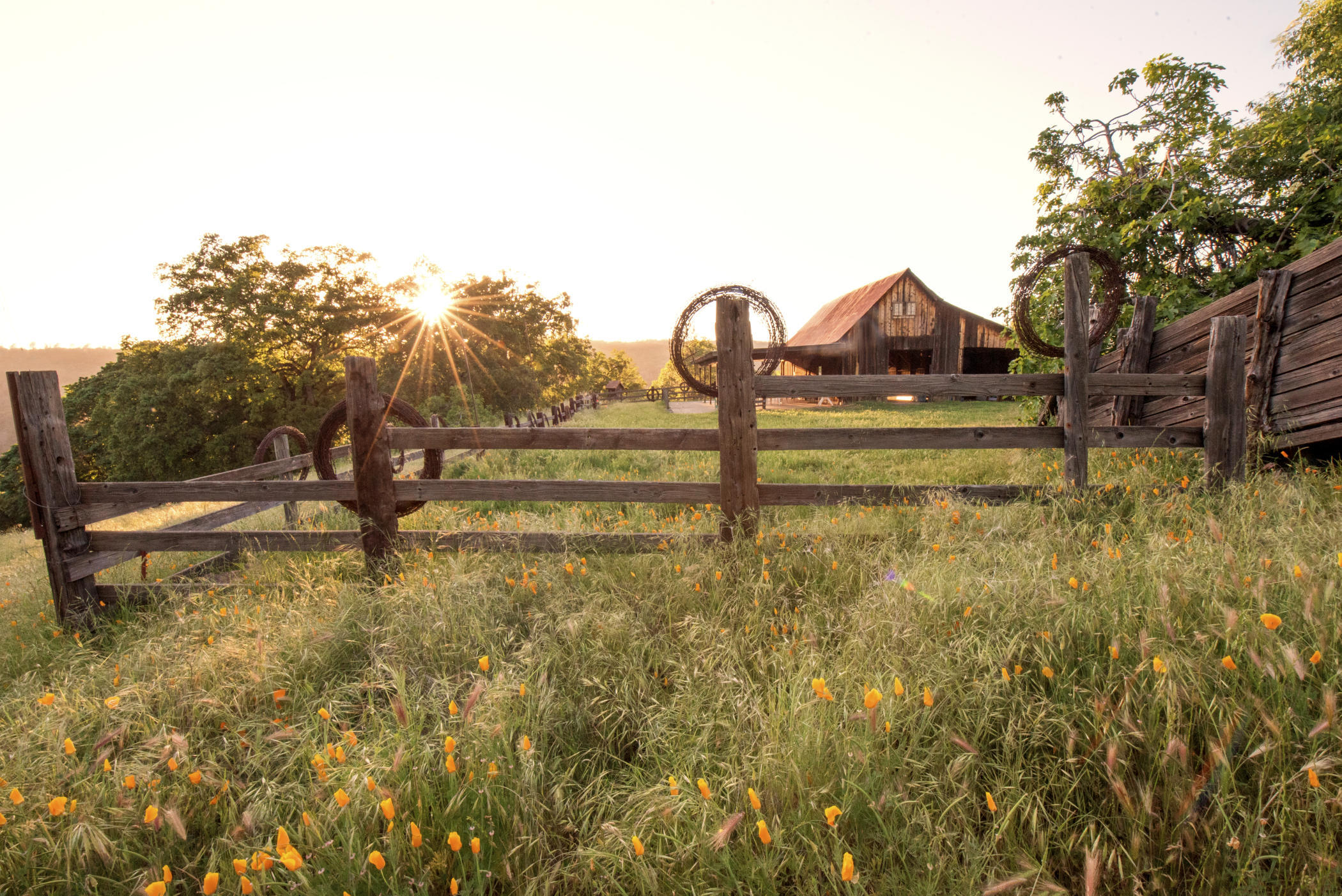
Poppies grow in front of a barn at the Big Chico Creek Ecological Reserve on Monday, May 7, 2018 in Chico, Calif.
A warm early summer breeze shifts the sinewy branches and drying leaves of overhead black oaks, and a quiet hiss moves through hills carpeted in dry grass. Eli Goodsell exits his indoor office—a slightly cramped but capable 200-square-foot structure—with phone to his ear.
Thick in conversation about a future collaboration, Goodsell strides purposefully to a pair of picnic tables that overlook a swath of the sprawling 7,835-acre Big Chico Creek Ecological Reserve (BCCER). Dressed in long pants and flip-flops, he sits, pushes up his flannel sleeves, and taps out notes on a laptop.
Goodsell is grateful for his outdoor office. Amid competing chirps from scrub jays and clicks from a bat hidden in the wooden rafters above him, this spot provides perspective.
Since his hiring in January 2017 as director of Chico State’s Ecological Reserves—of which BCCER is the largest component—Goodsell has been the driving force in brainstorming and implementing ways to maximize this property’s potential, determine how best to steward the thousands of acres with adequate funding, and leverage this precious land so that it becomes an educational destination—all while honoring its original inhabitants.
“When starting at the Ecological Reserves, I felt like it was the gem of the University and with a little bit of polish, we’d be able see it begin to glimmer,” said Goodsell (Criminal Justice, ’07; MA, Environmental Policy and Planning, ’11). “We’re starting to clean that gem off more and more, and while we still have a ways to go, we’re beginning to see that the gem is even bigger than we thought—and that’s really exciting.”
BCCER has served as a living laboratory for students of all ages for more than 20 years and provides miles of trail recreation for the ambitious outdoorsperson and curious citizen. Among the canyon oaks, valley oaks, bay laurels, and big leaf maples, predators and prey alike call BCCER home—black bears, coyotes, and bobcats prowl the property along with foxes, deer, and rabbits. More than 100 bird species, 90 types of fungi, and 50 species of butterflies live on this land.
Far below Goodsell’s office, the Big Chico Creek knifes through the property, its 4 ½ miles hosting half a dozen fish species, including rainbow trout, pacific lamprey, and riffle sculpin. This same water then flows through Bidwell Park and later Chico State—right past the University’s new Science Building—before eventually feeding local agriculture en route to the Sacramento River.
Less than 15 miles from campus, BCCER serves as an outdoor classroom, innovative training grounds for prescribed fire exercises, a spark for conversations around Indigenous culture, and a backdrop for faculty and student research, therapeutic practices, and hands-on learning.
“Sometimes you hear ‘ecological reserve,’ and people get this sense that it’s very far away—BCCER is not, it’s right there,” said David Hassenzahl, dean of the College of Natural Sciences. “It adds such value to many programs on campus. There’s not much like it, anywhere.”
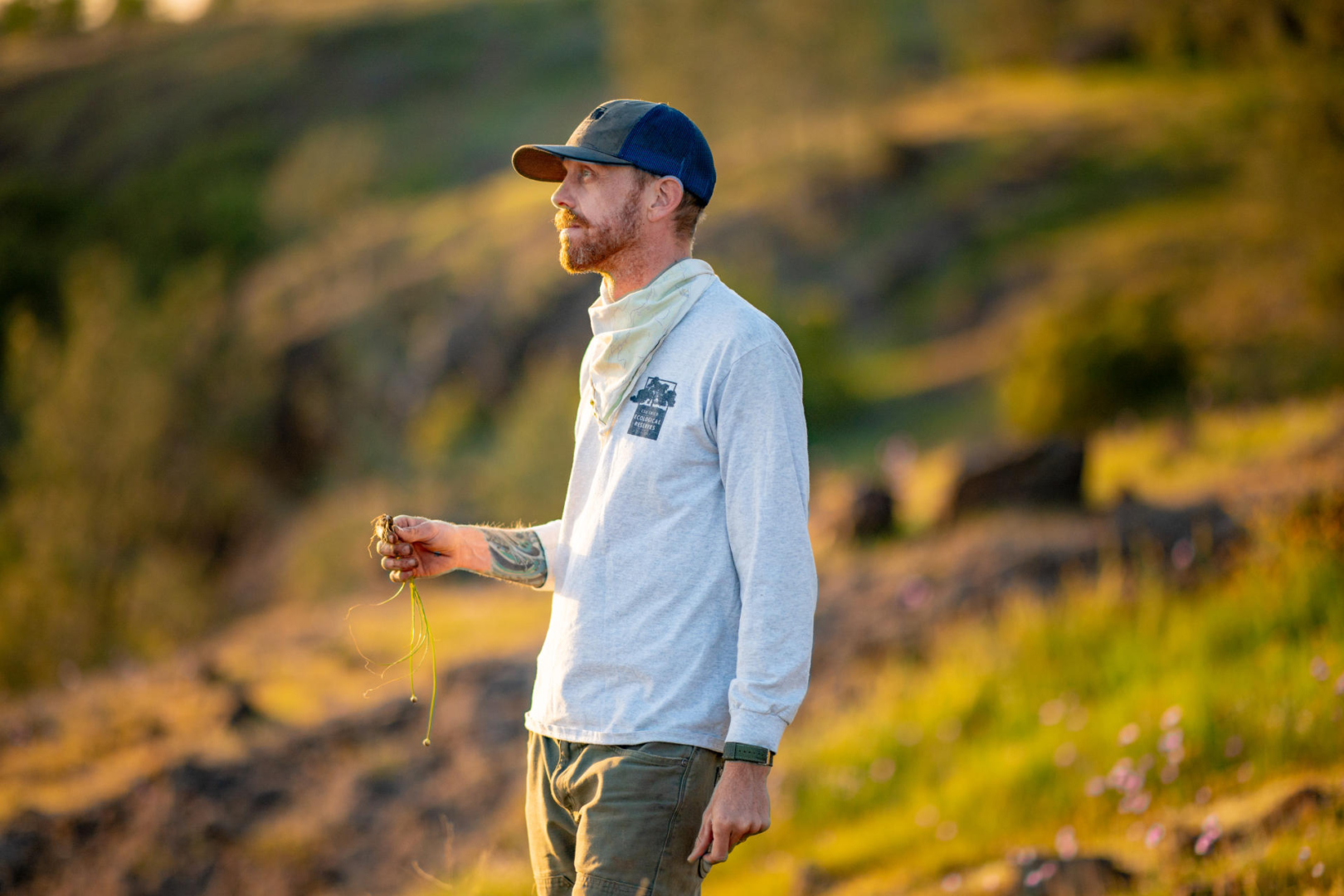
Chico State Enterprises, an auxiliary of the University, owns and manages BCCER, which was acquired with the purchase of the Simmons Ranch in 1999 and the Henning Ranch in 2001. The purchases totaled 3,950 acres with grant money from the Wildlife Conservation Board, the David and Lucile Packard Foundation, the US Fish and Wildlife Service, the California Department of Fish and Wildlife, the National Fish and Wildlife Foundation, the River Network, and community member Dan Drake.
Earlier this year, an anonymous donor gifted 3,885 adjoining acres—essentially doubling BCCER’s size and making it the California State University’s largest contiguous ecological reserve or field station, as well as one of the state’s largest college- or university-operated reserves.
Highest on Goodsell’s priority list is determining how to best serve students (from North State K–12 students up to Chico State graduate students) while developing and expanding innovative, sustainable land management practices.
Students are the heart of the reserve’s workforce—25 of its 32 employees are students and they work on the property 16–20 hours per week. Sophia Munoz-Oliverez worked at BCCER for nearly a year before she graduated in 2020 with a degree in parks and natural resources management. She fell in love with wildland firefighting—and found BCCER to be the ideal training ground. And amidst her work running a drip torch, learning how to use a chainsaw, and managing fuel reduction, she recognized she was surrounded by an awe-inspiring landscape.
“BCCER is a great place to feed your curiosity,” said Munoz-Oliverez, now the volunteer coordinator for the Paradise Recreation and Park District. “There’s just so much to explore and learn about up there, from the bugs to the animals to forestry to the plants. It’s amazing.”
Goodsell estimates that, pre-pandemic, BCCER received roughly 8,500 public visits a year—ranging from community day hikers to participants in public workshops, organized wildflower hikes, and butterfly counts—and he is hopeful he’ll hit those numbers again soon. Additionally, the reserve receives 2,400 visits from Chico State students each academic year, exemplifying its motto, “Where Education Meets the Land.”
While most student visitors are undergraduates, attendance is growing by graduate students who have found it to be an exceptional site for research. That’s especially true for those in Chico State’s new interdisciplinary wildlands management master’s degree program, who are studying the emerging forest and land management fields to become the next generation of land stewards.
The idea for the program—the first and only within the CSU system—came from Goodsell’s vantage point at BCCER. He saw the potential to leverage the University’s faculty experts, such as pyrogeographer and Miwok nation member Don Hankins and recreation, hospitality, and parks management professor Emilyn Sheffield, for a rare and innovative approach to immersive learning.
“Eli has done a remarkably good job of recruiting end-to-end and bringing in the most diverse faculty on any graduate program across the University,” said biological sciences professor Colleen Hatfield, who teaches “Community Ecology” in the program.
One of the program’s many strengths is that its interdisciplinary approach meets squarely with wildland management’s broad range of entry points—population, water, ecology, fire management, and even civil engineering when considering building and maintaining roads through wildland areas, Hatfield said.
“The program really focuses on how we better understand wildlands, better manage them, and better restore them if we need to,” she said. “One thing we’ve learned, particularly in this fire-prone environment we’re currently in, is we need to train that next generation to handle a lot of the challenges we’re handing them.”
In only its second year, word of the program is spreading. Students from the University of Washington, University of California, Santa Barbara, and Cal Poly San Luis Obispo have enrolled this year, understanding that it is one of a kind. As part of their training, they study wildland fire management, a subject with growing relevance and where BCCER is quickly emerging as a role model.
Under Goodsell’s leadership, BCCER has collaborated with local, state, and federal fire agencies for nearly a dozen prescribed burns—both in and outside Butte County—giving students and would-be firefighters opportunities to safely learn and use Indigenous fire practices. From a 441-acre, $1 million wildfire mitigation project in the Big Chico Creek watershed to a two-acre elderberry enhancement project on Lindo Channel, students are gaining diverse experience partnering with regional collaborators and agencies, government entities, and nonprofits to reduce fuels and, therefore, fire risk on public lands.
Fire management is vital to reduce the impacts of catastrophic wildfires that have plagued the West Coast
in recent years, Goodsell said. This program puts students at the forefront of a seismic shift in the way land is stewarded.
“They’re going to be the future agency administrators, politicians, land stewards, private contractors,” Goodsell said. “If we’re going to get to the scale we need to in California, they’re going to have jobs that don’t even exist yet—and they’re getting trained here.”
He added that BCCER can be the learning laboratory that ties together long-term forest health with cultural and ecological goals.
“We look to do a project with a 50-year lens, not a one-year or one-season lens,” he said. “We have the opportunity and, frankly, the obligation to pass on some of our knowledge for work that needs to happen now and in the future.”
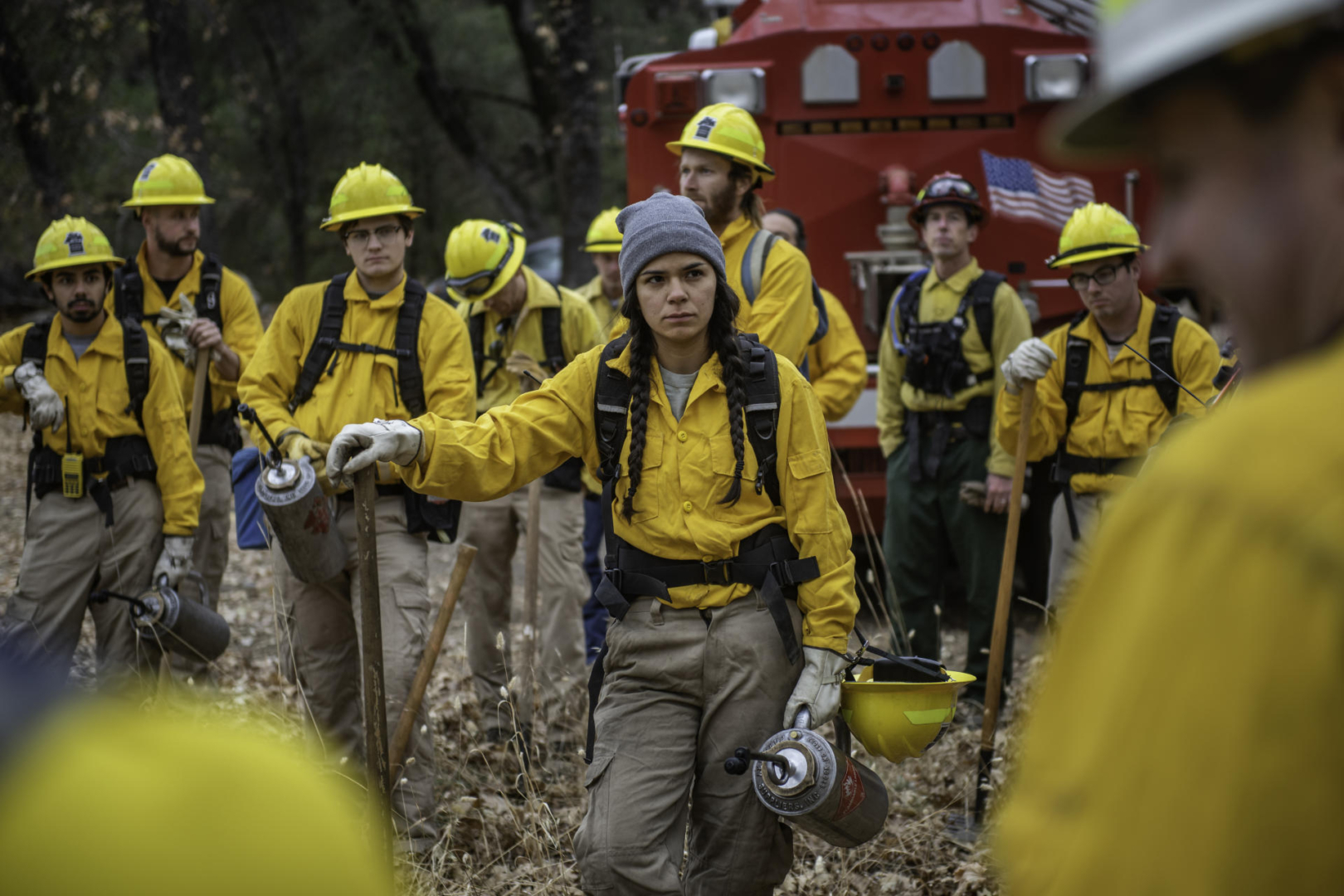
As it pilots innovative practices, BCCER has also been valuable in cultivating wellness and mental health. Through nearly $50,000 in funding from the North Valley Community Foundation and the Butte Strong Fund, the reserve collaborated with the Association of Nature and Forest Therapy Guides and Programs to train 15 local mental health providers, outdoor educators, and other health and wellness providers to become forest therapy guides this year.
Inspired by the Japanese practice of shinrin-yoku, forest therapy leverages the calming and restorative energy of
natural settings to reduce stress, boost well-being, and heal. With its towering pines, soothing stillness, and
expansive views, BCCER serves as an ideal location.
The initial therapy recipients are Camp Fire survivors. Seeing the project’s benefits firsthand, Goodsell, who
grew up in Paradise, recognizes the trauma those in the area endured on November 8, 2018.
“It was also this tragic loss of the natural environment,” he said. “I tried to figure out how I could give back and realized that doubling down on the work we do here is the solution.”
Joe Wills (MFT, ’07), a licensed marriage and family therapist with a private practice in Chico, is one of the trained guides leading sessions. To date, more than 500 people have participated. And though Wills, a Camp Fire survivor himself, had visited the reserve before, he said to go on a forest therapy walk there was to experience it in a very different and formative way.
“Slowing down, taking in trees, birds, clouds overhead— there was a richness to the world around me that was astounding and humbling,” he said. “It was like beauty that was hiding in plain sight—hard to describe. I don’t think
the BCCER is the only place by any means that could evoke such feelings, but it is definitely one of those places.”
Perhaps no one knows the benefits of the natural environment better than the land’s original inhabitants, the Mechoopda and Maidu who lived and thrived in this area for time immemorial. These expert land stewards enhanced the production of resources (acorns for food and grasses for baskets, among others) by selectively burning and utilized available supplies to live day-to-day. In fact, Dennis Ramirez, chairman of the Mechoopda Indian Tribe of Chico Rancheria, said mortars—used to pound, crush, or grind seeds with a pestle—were recently discovered on the reserve, further evidence of the tribe’s long-ago presence.
“It is a very concrete connection that Mechoopda lived in that area,” Ramirez said. “And those who visit the reserve will have that connection, they’ll feel it when they go up there—whether you’re Native or non-Native, you’re going to feel a connection.”
When it comes to appreciating the land once occupied by Indigenous people, Ramirez encourages visitors to be present, participate close-up, and notice life flourishing around them—hearing a bird hop through the brush,
smelling the crushed foliage of an incense cedar, feeling the grass that has blanketed this canyon for centuries.
“Touch the grasses, put your hands in the soil, the soil our ancestors used,” he said. “Ask yourself, ‘What does it smell like? What does it feel like? Does it leave a residue?’ You won’t get that experience through Zoom.”
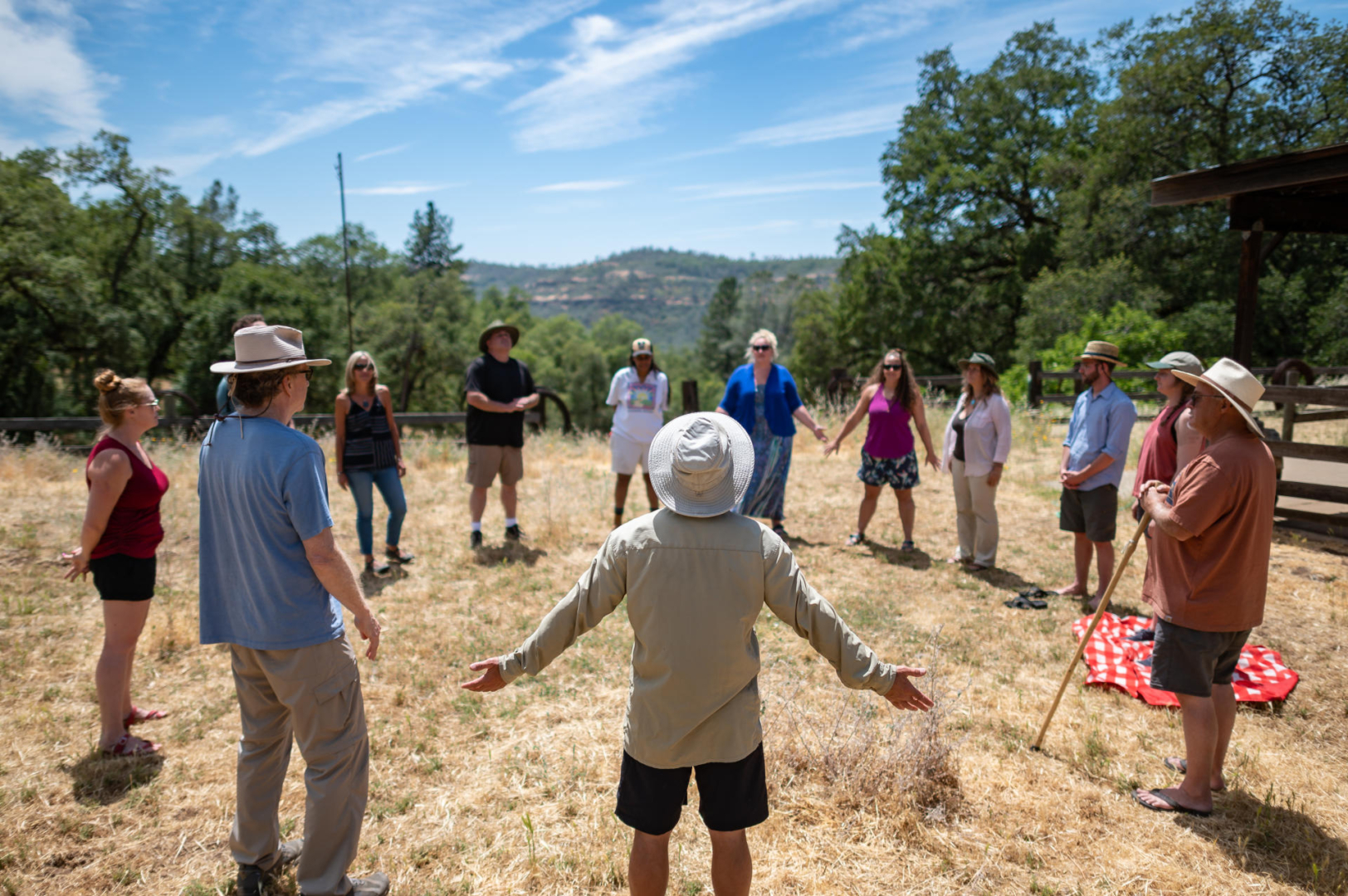
Community projects like fuels reduction and forest therapy don’t happen without funding. And whether it’s a gift from the public or a grant, Goodsell’s fundraising success has been nothing short of phenomenal, said Hassenzahl, who works with him closely through the College of Natural Sciences.
“Eli seems to have boundless energy, he has very little ego,” Hassenzahl said. “He’s someone who wants
to make things happen and wants to support other people to do things. He’s perfect for the job.”
In order to add more educational offerings, Goodsell knew he needed to embark on ambitious and creative campaigns to increase fundraising. The year Goodsell was hired, BCCER was awarded $7,911 worth of grants. That figure since has increased more than twentyfold, with $168,415 in grants awarded in 2019–20.
Currently, Goodsell and BCCER are managing 26 grants on contracts worth nearly $2 million. And reserve staffing has exploded from two full-time staff and a handful of part-time students to 32 employees.
In 2019, he launched the Adopt an Acre program where a donor’s gift supports K–12 outdoor education, innovative student research, or fire mitigation projects—like providing wildland firefighter training and scholarships for critical gear like specialized firefighting boots—in return for a symbolic acre marked on the BCCER’s map.
To date, 79 acres have been adopted—and a large percentage are equipped with a trail camera. From capturing a fox and skunk in the same frame to turkeys flocking together to a family of deer drinking from a recently donated watering station, the field cameras provide a picture of the wildlife that traverse the reserve.
Jackie Rodriguez (Environmental Science, ’20) worked with trail cameras for a summer project through the
Chico STEM Connections Collaborative, which provides research opportunities to historically underserved
students. She recalled reviewing footage from a particular camera and spotting a mountain lion prowling along
a path she had been walking on just days before.
“It was amazing. When you are doing fieldwork, you think, ‘This is what I was reading about,’” she said. “That’s pretty exciting.”
Private donations also helped 2021 become a historic year. In February, Chico State announced Professor Emeritus Wes Dempsey, his wife, and his family donated $1 million to BCCER, its largest-ever cash donation. The Wesley and Phyllis Dempsey Endowment in Memory of David P. Dempsey will directly support educating the next generation of land stewards and conservationists.
In addition, the 3,885-acre land gift this March will expand the reserve’s ability to be an important educational space, while preserving and enriching the environment.
With these two historic philanthropic acts, Goodsell has more runway to establish further opportunities for students and others to participate in land stewardship—and experience the awe and joy BCCER instills in him on a daily basis.
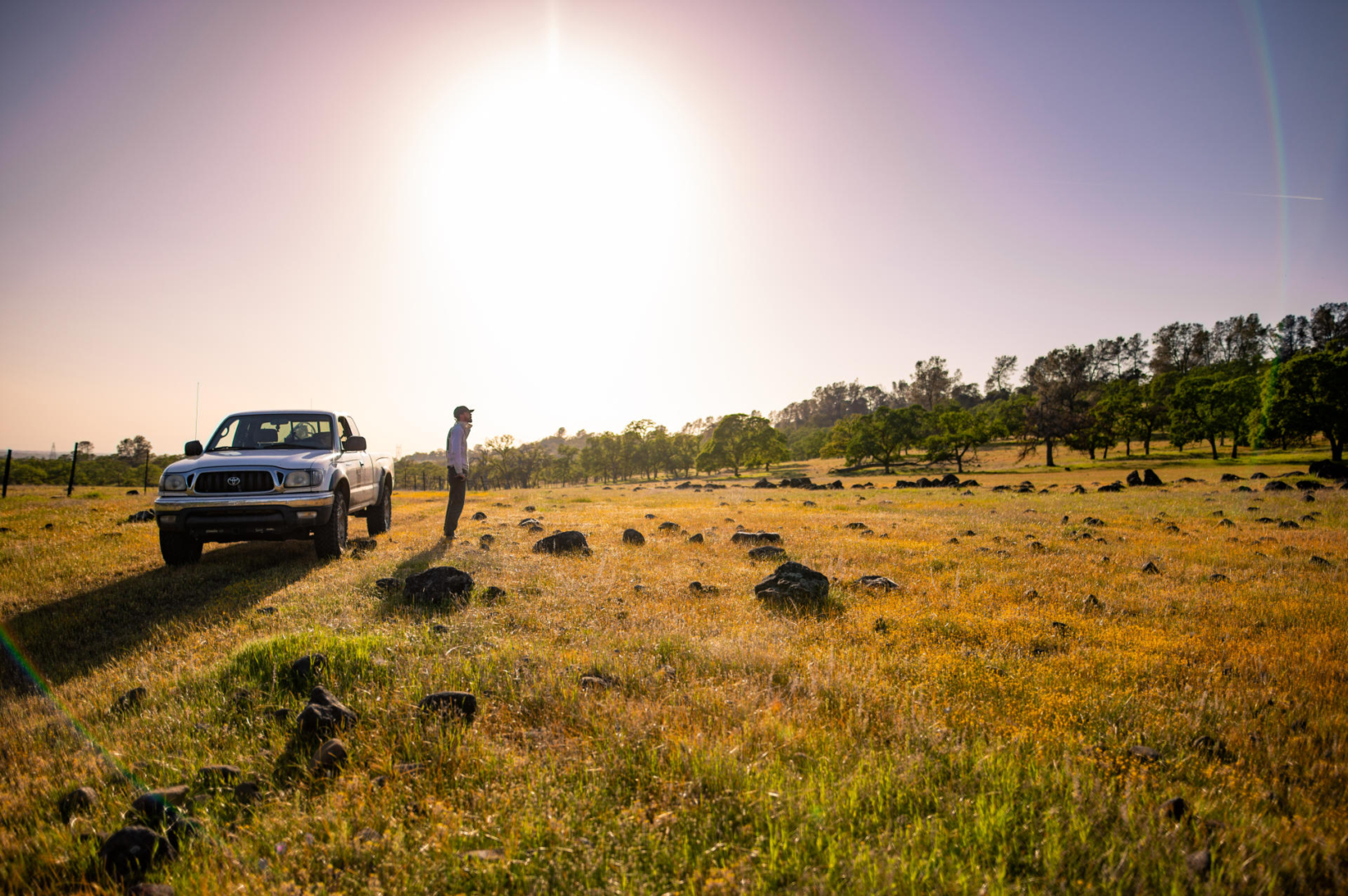
Continuing his phone conversation, Goodsell glimpses nearby movement—hanging from a fence post 20 feet away, a seven-inch valley garter snake has twisted and twirled itself into the strong, sticky silk of a black widow’s spider web. Without missing a beat, he walks over to the squirming snake, plucks it loose (along with a chunk of web), and—still engaged in the call—places it in the brush where it slithers to safety.
This is how Goodsell spends his days at BCCER. Whether it’s fielding a call from a state or federal legislator, coordinating resources for a controlled burn in another county, or discussing early results from a study of frogs, his
efforts are driven by his reverence and respect for this land.
“I have experienced things on this landscape that I didn’t know existed 15 minutes from Chico—whether it’s discovering we have flying squirrels at this elevation, because we catch them during owl banding, or seeing some old-growth ponderosa pines that look like they’re out of Jurassic Park,” he said. “Seeing those types of things and recognizing how wild and healthy our ecosystems can be—so close to an urban environment—is really incredible.”
After freeing the snake and before Goodsell finishes his phone call, he verbally lists his action items—there are always action items—then returns to his laptop. He emails himself a few reminders and walks back to his indoor office—but not before gazing across the canyon one more time.
With the sun rising in the sky, the black oaks continue their noisy play, then crescendo, before falling silent.
To adopt an acre of your own or support other programming at BCCER, visit www.csuchico.edu/bccer


